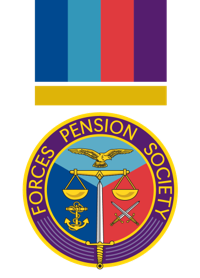
In part 1 on this topic we introduced you to the rules surrounding AFPS Adult Pension Benefits on AFPS05, AFPS15 and RFPS.
Today we continue on the same theme but with AFPS75, which is a little more complicated!
Firstly, it normally requires couples to be married or in a civil partnership. The exception to the norm occurs where the member’s death is due to service and the condition which caused the death had it origins before the introduction of the Armed Forces Compensation Scheme on 6 April 2005.
Next, adult pensions are normally worth 50% of the member’s pension rate – but there’s that word ‘normally’ again! Prior to 1 April 1973 widows’ pensions were paid at 1/3 of the member’s rate. From 1 April 73 the widows’ rate increased to ½ of the member’s rate. Those with service prior to 1 April 1973 were invited to pay to have their earlier service counted at ½ rate for widow’s benefits but many did not, resulting in some widow’s pensions being less than 50% of the member’s entitlement.
Now there is the question of when the marriage took place. Prior to 6 April 1978, AFPS75 expected that the couple should be married during the member’s service in the Armed Forces in order for the wife to be entitled to a widow’s pension in the event of her husband’s death – and, that being the case, the widow’s pension would be based on all of the member’s reckonable service. However, if all of the member’s service was before that date and he married after he left service, there would be no widow’s entitlement. If the member had service after that date, and married after his discharge, his widow’s pension would be based only on his service from 6 April 1978 onwards.
This is called the Post Retirement Marriage (PRM) rule and, as it can result in the widow having a very small entitlement, Veterans UK might offer her the opportunity to accept the small pension or accept a one-off taxable lump sum instead.
Now a word about AFPS75 widowers and civil partners. In order for them to be entitled to a dependant’s pension, the member had to have served on or after 1 October 1987 and, if the marriage or civil partnership took place on or after 6 April 1978, the PRM rule applies.
There is an understandable feeling that the 1/3 rate: 1/2 rate rule and the PRM rule are unfair, and should be challenged. We are sorry to have to confirm that they have been challenged unsuccessfully and they are here to stay.
If the member is in receipt of their pension at the time of their death, any AFPS 75 adult dependant’s entitlement would comprise:
- a Short Term Family Pension (STFP) equal to the member’s full entitlement for 91 days (182 days if there are eligible children);
followed by:
- a pension, payable for life, the amount dependent on the points explained above.
If the AFPS 75 member is not in receipt of their pension at the time of their death, there is no STFP but the preserved pension lump sum (worth 3 times the preserved pension) is payable to the spouse, civil partner or children, along with any survivor’s pension due.
Finally, for all schemes, if you are married or in a civil partnership, to claim an adult dependant’s pension, you will need to produce certificates proving your relationship – so make sure you know where they are!
If you are a member of the Forces Pension Society and have a pension question, email us at pensionenquiries@forpen.co.uk. If you are not a member but would like to learn more about us click here
Read part one of this series here
Written for Envoy Summer 2021




